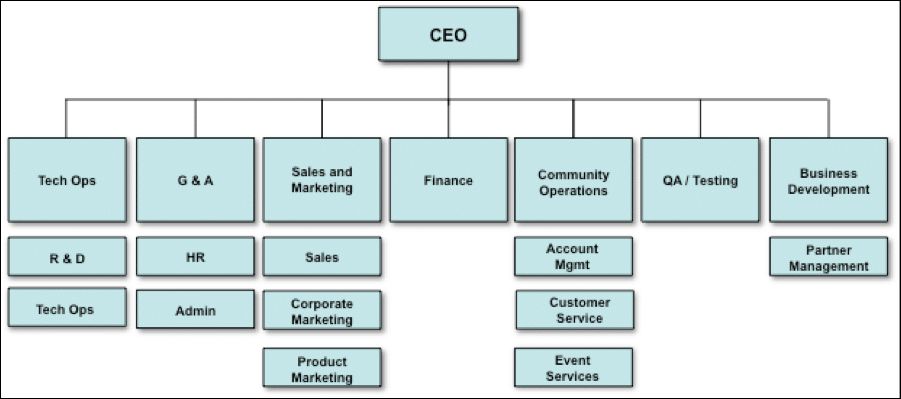| Excerpt from www.NDMA.COM, © 2025 N. Dean Meyer and Associates Inc.
Analysis: A Few Words in a Box
announcing an organization chart with just a few words in each box is bound to create confusion
by N. Dean Meyer
[excerpt from the book, Principle-based Organizational Structure]
A CIO put Rick in charge of the "Infrastructure" group, and Charlie managed "Enterprise Architecture" (EA). There were other managers, but let's just focus on these two:
What do those titles really mean? With just a word or two in each box on the organization chart, it's hard to know. The lack of clear domains led to many problems....
Reduced SpecializationSplitting a profession into multiple groups reduces specialization. Consider two competing engineering groups, each doing everything, versus one specializing in one branch of engineering and the other in another. The costs of reduced specialization include lower productivity, slower delivery, lower quality, greater risk, less innovation, more stress, and lower motivation.
Redundant EffortsMore than one group does the same research, and produces the same kind of products. Solutions are reinvented rather than reused. Redundant efforts waste time and money, increasing costs.
Less InnovationWhen two groups study the same thing, something else that one of them might otherwise have explored is missed.
Dis-integrationThey also fought over standards. Charlie thought Enterprise Architecture was authorized to decide technology standards. Left out of the decision process, Rick simply ignored many standards. Multiple, incompatible versions of the same product can undermine enterprise synergies. For example, in engineering, overlaps may results in dozens of different fasteners (nuts and bolts) which have essentially the same purpose, increasing costs of manufacturing, inventories, and support.
Client ConfusionWhen two groups offer the same products, customers don't know where to go for what, and the organization appears confused and inefficient.
Internal StrifeCharlie (Enterprise Architecture) believed his job was to design the infrastructure. He proposed cutting-edge technologies that weren't yet stable, but constituted an elegant design. Rick, of course, fought that. He looked bad when he resisted innovation. But he knew he couldn't deliver reliable services with technologies that were not ready for his production environment. So he ignored Charlie and designed his own infrastructure.
Less TeamworkInternal competition may be friendly, and it may be limited to just part of staff's work. But the inevitable friction undermines teamwork. No amount of teambuilding can overcome this force built into the structure.
Lack of EntrepreneurshipWhenever a single line of business is fragmented, no one feels "ownership" as the entrepreneur who's accountable for its performance, now and in the future.
Bottom LineIt wasn't that Rick and Charlie disliked one another. They fought because they were paid to fight. They both believed they had authority over the design of the infrastructure. A lack of clarity may cause multiple groups to think they're responsible for the same function -- overlapping domains. When domains overlap, staff fight and compete with one another. Whether by deliberately pitting people against one another or inadvertently leaving boundaries vague, internal competition is costly. A good structure defines explicit and distinct domains, with no overlapping boundaries. The best way to do this is not a few words in a box on the organization chart, but rather a definition of what each group "sells" -- their catalogs of distinct products and services.
|


